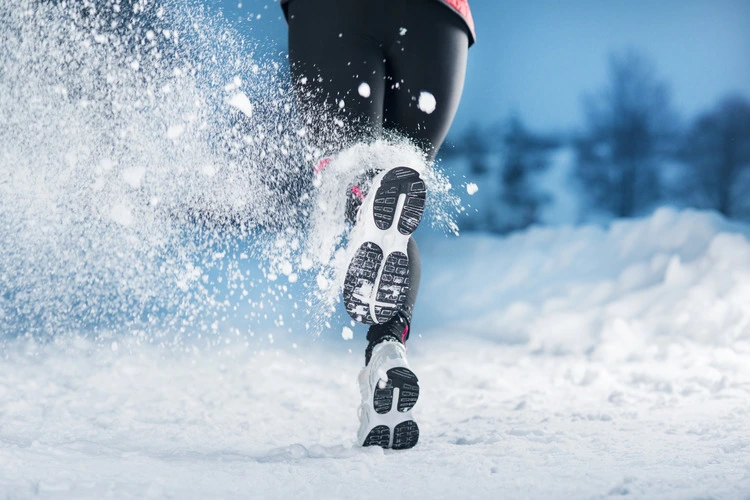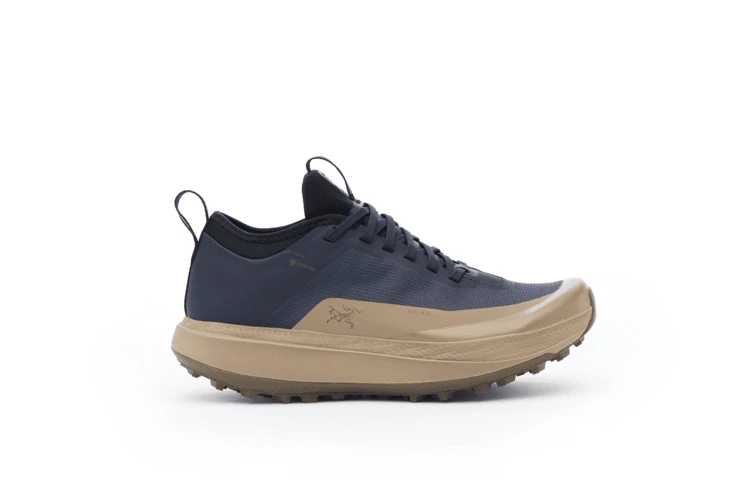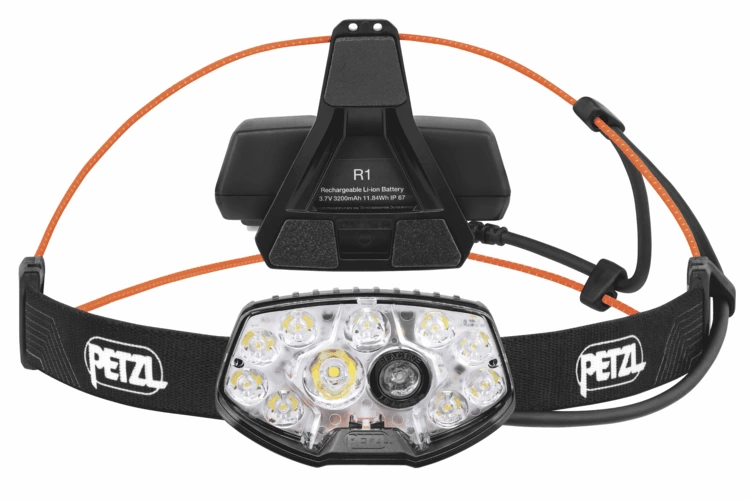
Tristan Kennedy on the rewards on winter trail running – and the exact kit you need to succeed in colder months
By Tristan Kennedy
American trail runner John Kelly might not be a household name (at least, not yet), but he’s one of the best in the business. In 2017, he became only the 15th person ever to finish the Barkley Marathons, arguably the toughest ultra-running event on the planet.
It’s a race that starts whenever the idiosyncratic event organiser randomly decides, and almost no-one ever finishes. But in 2023, Kelly completed five loops of the unmarked, constantly changing 32-kilometre course for a second time, a feat he repeated again last year.
During a brief, two-year stint living in Bristol for work, Kelly took on three classic British fell-running challenges: the Bob Graham Round, the Paddy Buckley Round and the Ramsay Round. Each is around 100 kilometres long and involves more than 8,000 metres of climbing – the equivalent of a major Himalayan peak – in 24 hours.
But instead of tackling them individually, Kelly decided to complete the three back-to-back, cycling from Wales to the Lake District to the Scottish Highlands to reach each round’s start point.
For good measure, Kelly also managed to win the Montane Spine Race – a famously freezing ultra that runs through the Peak District in the middle of winter – set a summer record along its 431-kilometre course, and smash the fastest time for running up all 214 ‘Wainwrights’, as the highest mountains in the Lake District are known.
As the above CV indicates, John Kelly is something of a glutton for punishment, a trait he shares with most successful endurance athletes.
‘I have a very high amount of what I could refer to positively as “mental resilience” – or more realistically, as stubbornness,’ he told me when I interviewed him recently. Having been forced to quit once, he completed his ‘Grand Round’ (linking the Graham, Buckley and Ramsay rounds) on the second time of asking, in 2020. And he had to run through Storm Ellen – with winds gusting at up to 105km/h – to get there. ‘It rolled in about a third of the way through the Ramsay in Scotland, when I was already on the precipice, right on the edge of breaking,’ he said.
Unlike some elite athletes, the financial rewards for the world’s best ultra runners are scant. Despite his success, Kelly still funds his running habit, and feeds his family, by working as a data scientist at a risk management firm by day.
Running is a hobby ‘that kind of snowballed’, he told me. Which makes his achievements simultaneously all the more remarkable, and also more relatable.
It might be impossible for mere mortals to imagine running 431km non-stop in the Peak District in January, but anyone who’s tried running through winter will be able to identify with the suspicion that it might not be worth it.
Enjoying this article? Check out some more from our Equipment Matters series:
Personally, I find November particularly bleak – with five, long months of running in the dark stretching out ahead. Like Kelly, I need to draw on intrinsic motivations to keep going at this time of year, when the extrinsic rewards feel few and far between.
But it’s not just Kelly’s ‘resilience or stubbornness’ in the face of overwhelming physical and meteorological odds that I find inspiring.
During our interview, he spent a lot of time talking about the mental elements of ultra-running.
It’s about being able to look at all the potential problems that could arise during one of these events, having contingency plans, fitting all these things together into a schedule and working out the logistics for it,’ he said. He perfected many of his problem- solving skills in his day job, he said, but they’d been essential for his success as an ultra-runner. ‘The longer the runs got, the more it allowed some of these skills to come into play,’ he explained.

In winter, of course, contingency planning is a lot about selecting the right kit. If you’re covering any distance in the cold and wet, a normal pair of trainers and a regular, summer trail-running vest aren’t going to cut it. Winter trail- running shoes should have a deep tread with big lugs on the soles to cope with mud and stop you slipping on wet paths.
They should also have a Gore-Tex membrane – or something made out of a similarly waterproof, breathable material – to prevent puddle splashes or rain from soaking your feet.
You’ll want to choose a trail-running vest with a decent carrying capacity in winter (ten litres and above) because you’ll need to carry extra layers to cope with changeable conditions.
You’ll need to be able to carry a lightweight waterproof if there’s even a chance of showers, and perhaps a technical fleece-style mid-layer, depending on the temperature. I find gloves essential, even if I’m wearing short sleeves. And of course, you should always be carrying more water than you think you’ll need, and wearing a decent head torch – there’s always a higher risk you’ll end up returning home in the dark in winter, even if you’re not planning on it.
Once you start adding in the complexities of route planning and navigation, especially on longer runs, it’s easy to see why ultra running appeals to analytical minds such as John Kelly’s. And the same, I find, is true of trail running in winter. While fitness goals in spring are usually the ultimate aim, the intrinsic motivation that keeps me going through the cold, dark months is as much mental as physical.
As Eliud Kipchoge, the world’s greatest-ever marathon runner, and very much a household name, is fond of saying: ‘Athletics is not so much about the legs. It’s about the heart and mind.’
I didn’t ask him specifically, but I’m sure John Kelly could relate to that sentiment. I know I do.
Three items that will make winter trail running more comfortable

The Surprisingly Useful: Hydrapak Velocity Pro 1.5L Water Bladder – £60.50 (Buy here)
Hydration specialists Hydrapak make plenty of products aimed at trail runners – from soft flasks that fit in running vests to ergonomically designed water bottles. In summer, I would run with one of their soft flasks, but in winter I’ve found having a hydration bladder in my vest surprisingly useful: it makes it much easier to grab a drink on the go when you’re wearing gloves, even pretty thick gloves.
This Velocity Pro reservoir contains 1.5 litres and features a bite valve that self-seals, with an extra-secure locking mechanism to prevent spillage. The brand’s plug-and- play valve at the bottom allows you to disconnect the tube without it leaking.

The Essential: Arc’Teryx Sylan GRX Shoes – £210 (Buy here)
Waterproof, lightweight and breathable, these are an ideal pair of trail-running shoes for wintery, wet adventures. The Vibram Megagrip soles have a deep, wide, 6mm lug pattern, which gives you excellent grip on muddy trails, while the porous Gore-Tex liner provides full waterproof protection without trapping moisture (read sweat) around your feet.
Canadian brand Arc’Teryx, based in Vancouver, has a stellar reputation in the trail-running industry. These comfortable, winter-specific trail shoes give you a good indication why.
The Luxury: Petzl Nao RL Headtorch – £150 (Buy here)

A headlamp is essential for winter trail running, but this absolute top-of-the-range model from French mountain experts Petzl definitely sits at the upper end of the essential bracket.
Many perfectly serviceable head torches, including cheaper Petzl models, produce around 400 lumens of light – a ‘lumen’ being the equivalent of a single candle.
The Nao RL, however, pumps out an incredible 1,500 lumens – roughly the same as a portable construction site floodlight. Incredibly, given its power, it only weighs 145 grams. Petzl’s Reactive Technology allows the brightness to adjust automatically to the ambient light, allowing you to save battery power, and it has a red light at the rear to help you stay visible at night.




